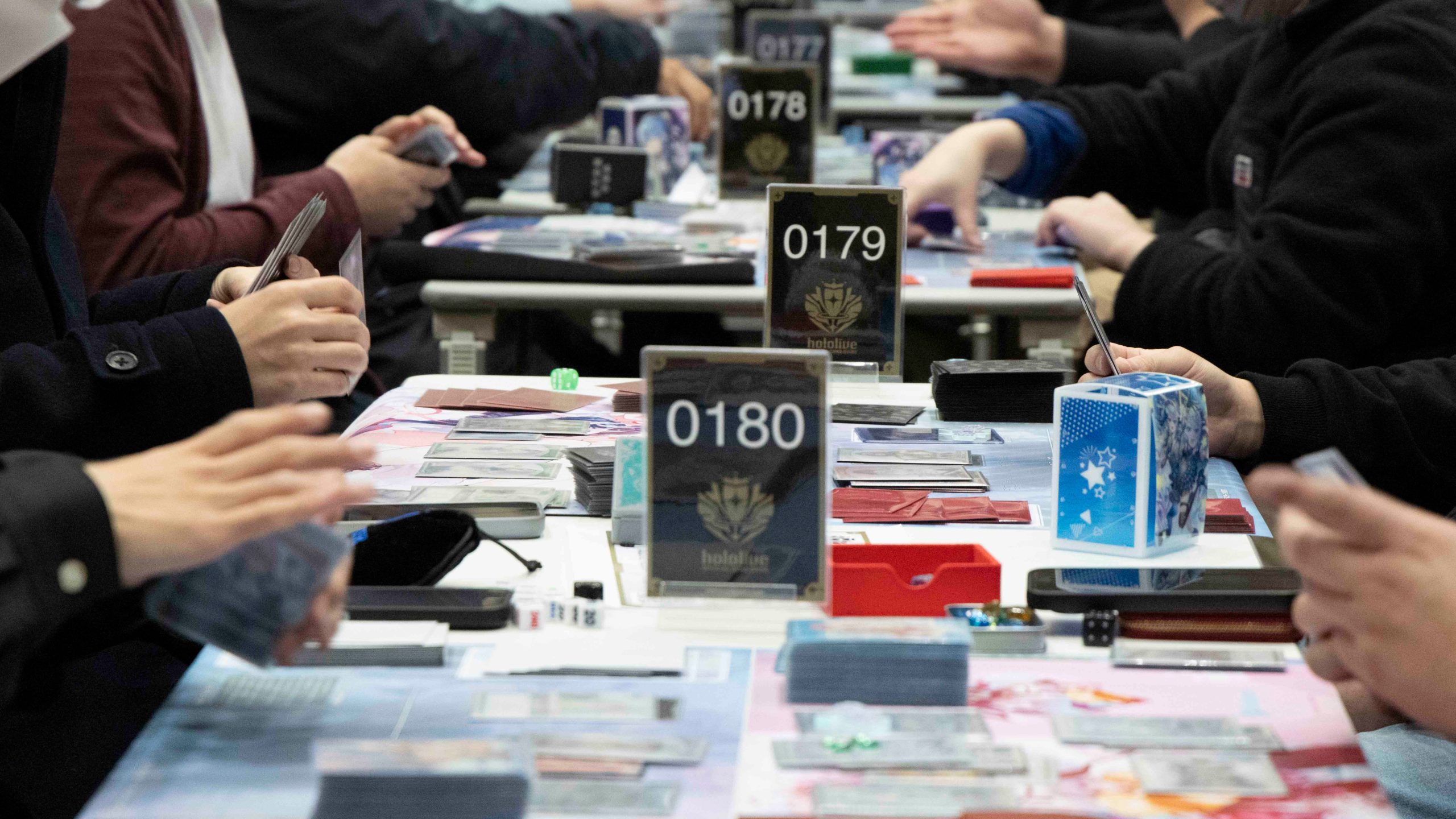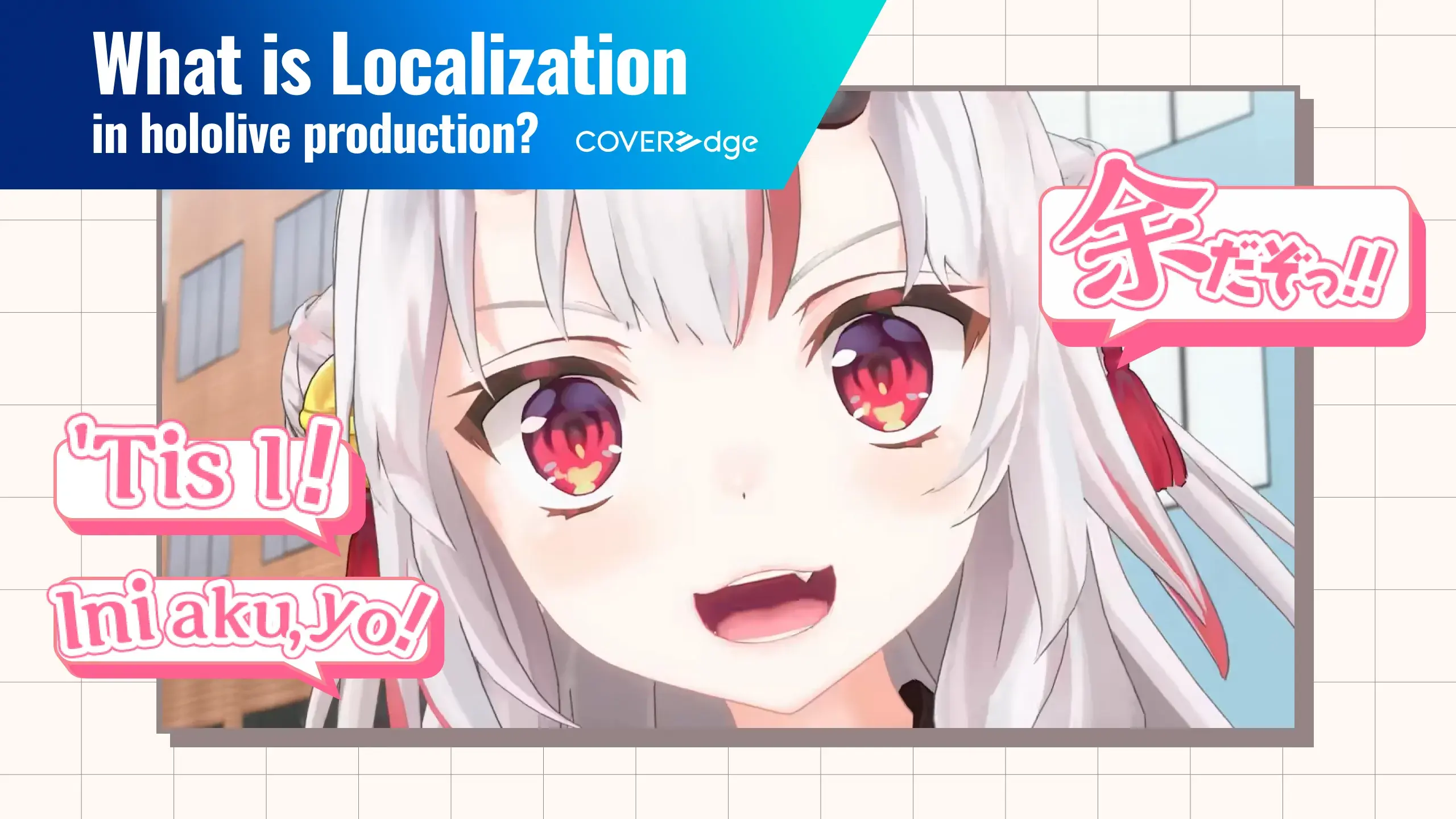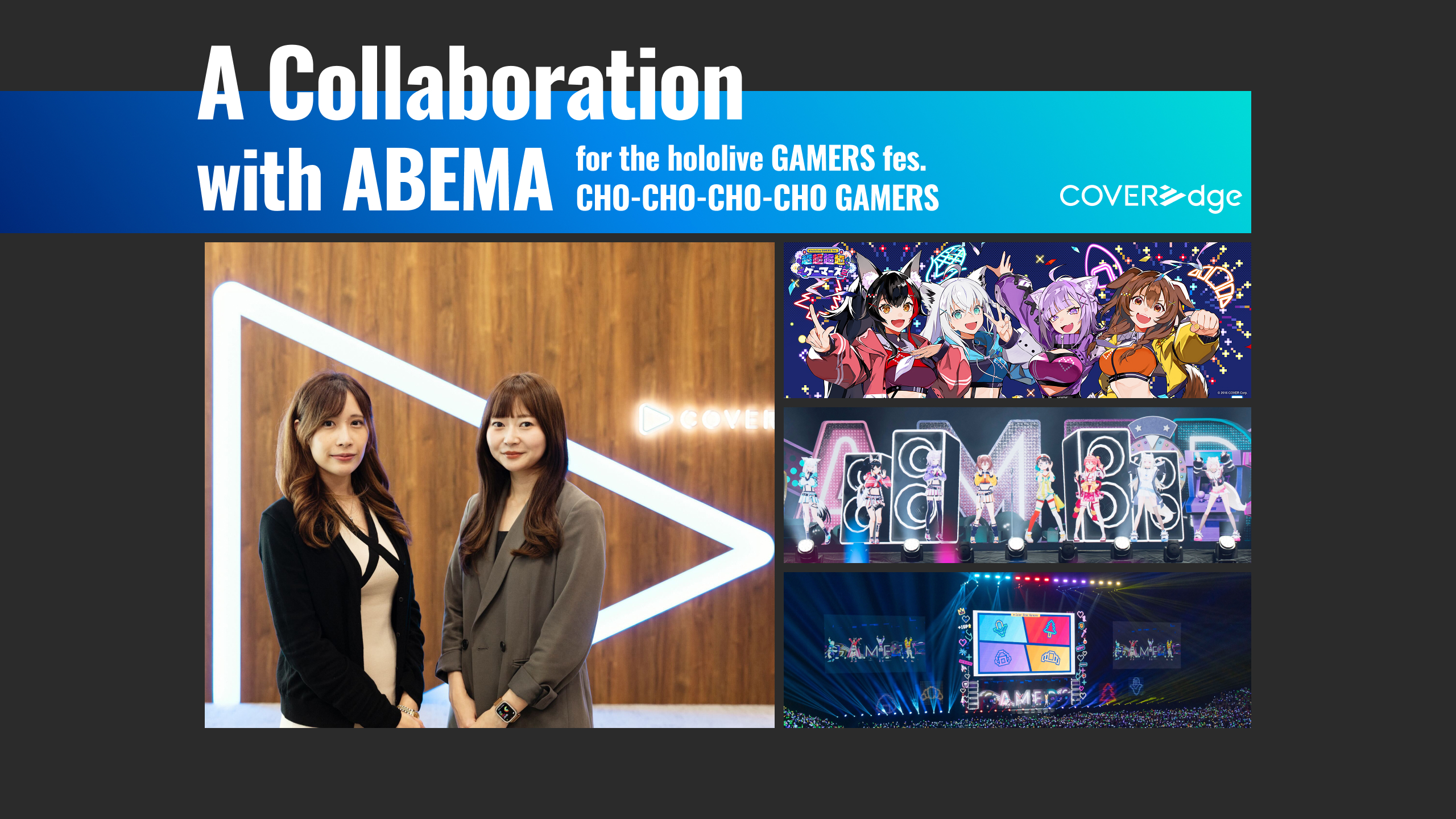
Since its release in September 2024, the hololive OFFICIAL CARD GAME (hereinafter, hOCG) has been steadily expanding its fan base, culminating in receiving the Media Create New TCG Award at the Media Create TCG Award 2025*1 on May 14, 2025. With the English version set to be released later this year and further global expansion on the horizon, what is the story behind the creation of hOCG?
In this COVERedge exclusive, we spoke with Reki Horie, Producer from the Card Business Development Office at COVER Corporation, who is overseeing this project, and Hiroshi Kawatsu, Producer from TCG Development Division 2 at Bushiroad Inc., responsible for sales and operational support, for a little look behind the scenes at the creation of hOCG and to hear about its future prospects.
Reki Horie
COVER Corporation / Division Manager and Producer, TCG Development Division, Card Business Development Office
After first joining COVER in 2022, Reki is now the producer of the hololive OFFICIAL CARD GAME, overseeing the entire project from planning and development to sales and promotion and leading a team of seven within the Card Business Development Office. With experience in the licensing business for Pokémon*2 at Shogakukan-Shueisha Productions and launching an IP business with Rakuten, he has been involved in business development in the merchandising sector for COVER, leading the launch of COVER’s own plushie brand, “hololive friends with u,” and the opening of the hololive production store that opened on Tokyo Character Street.
Hiroshi Kawatsu
Bushiroad Inc. / Producer, TCG Development Division 2, TCG Unit
After joining Bushiroad in 2017, Hiroshi was involved in the launch of the Shadowverse EVOLVE card game after gaining three and a half years of experience with the Weiβ Schwarz card game and participated in the development of hOCG in March 2024 supporting its ramp up. Currently, in a sales and operations support role, he is primarily responsible for B2B relations, such as coordinating with distributors and retailers, sales, getting feedback, and making operational infrastructure changes.
Born from an overseas trip and fan interactions
ー Let’s jump right into it. How did the concept for hOCG come about? Please share the story from the initial conception of the idea to it becoming a fully-fledged product.
To be honest, I originally planned to develop it as a collectible card using AR (augmented reality), rather than a trading card game (hereinafter TCG), but while working on it, a turning point came during a business trip to the U.S. in the summer of 2023. While observing a local event, I saw firsthand how hololive fans gathered and naturally connected with one another, and from there, I started thinking about how to provide an experience that hololive fans can enjoy within their community, rather than just AR cards that can be enjoyed alone. The suggestion of “Why don’t we try making a TCG?” actually came up while in a taxi over there, and thus hOCG was born. When planning started after returning to Japan, I was flying solo on the project with no experience in TCG production and zero knowledge of it as a business model.
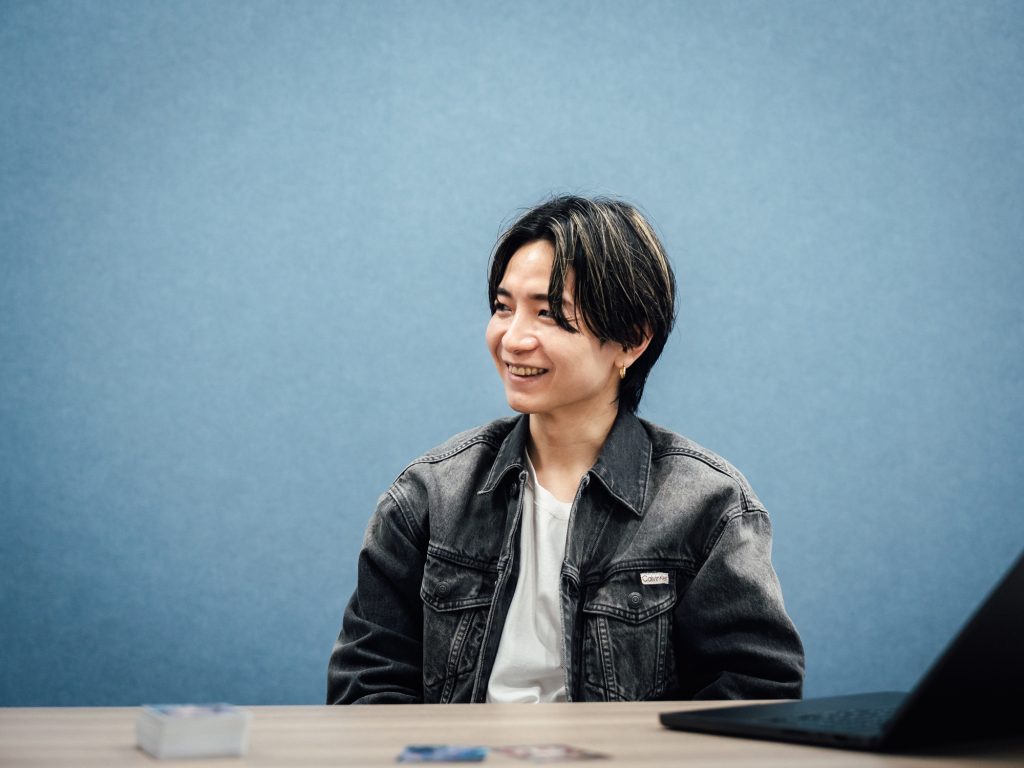
ーSo, you started this by yourself! What was the first thing you worked on?
I started by buying various card games in Akihabara and studying them. At the time, I was also acting as manager of the commercialization team, so from launch to release, it felt like I was just constantly running full steam ahead. Honestly, those days were such a whirlwind that I barely even remember them…(lol)
I started working with Kawatsu in March 2024 and I clearly remember being asked, “How many people are working with you?” and answering, “It’s just me.” Every time I explained the situation, so many people told me, “That’s insane!” (lol). Nevertheless, it was thanks to the support of my colleagues in other departments and collaborators such as Kawatsu that we were able to reach the point where the game was ready for release. I also felt I could draw on my own personal childhood memories of playing card games, which helped me a lot through this process.
ーThe TCG business is not just about product development but also requires a wide range of other elements, such as tournament management and community building, as well. What was it like working together on a daily basis?
In addition to weekly meetings, we are in close communication on a regular basis and support each other as needed to make sure the project is progressing as expected.
We both value freely sharing resources and experiences with each other as we work toward our common goal of making something worthwhile. I feel that even within the industry, it’s rare to find a card game project with such a strong collaborative framework, which makes this a very rewarding initiative.
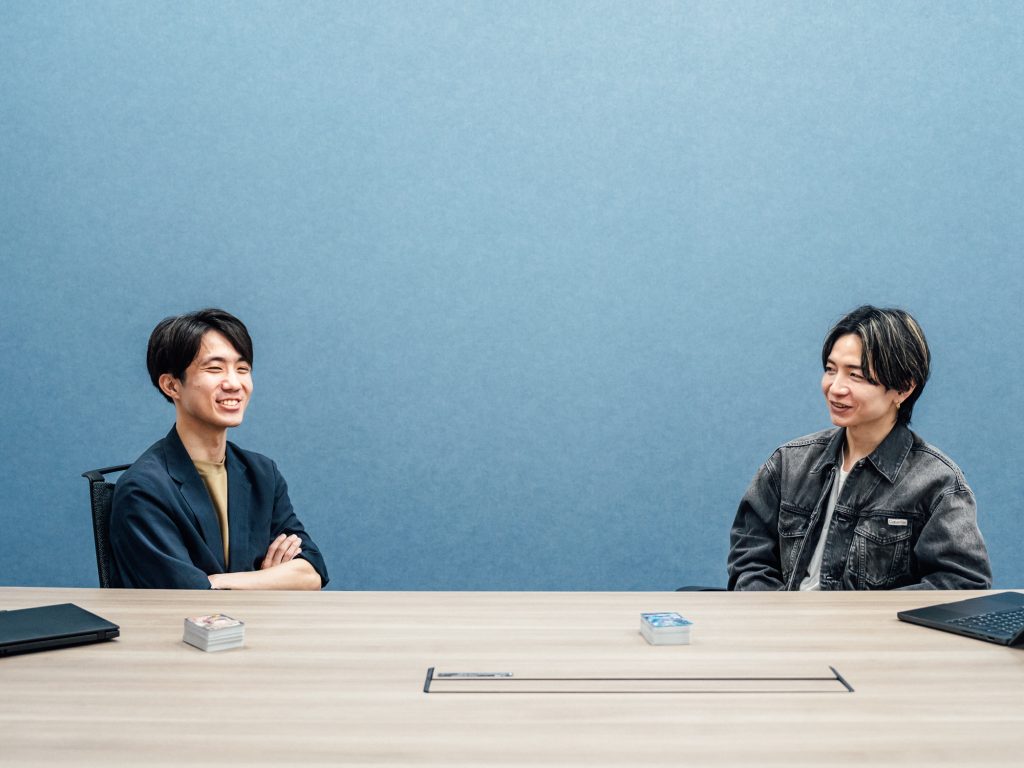
“A card game without battles” — a design concept that encapsulates hololive’s unique lore
ーWere there any particularly challenging aspects of the development process, or any episodes that left a strong impression on you?
Since hololive talents aren’t portrayed as “combatants,” we couldn’t simply apply a battle-based system like those found in traditional TCGs. It was challenging to figure out how the VTubers would appear within the card game and what kind of role the players themselves would take on. The concept of oshi fandom led to an eventual breakthrough, helping us envision a game experience that truly felt authentic to hololive.
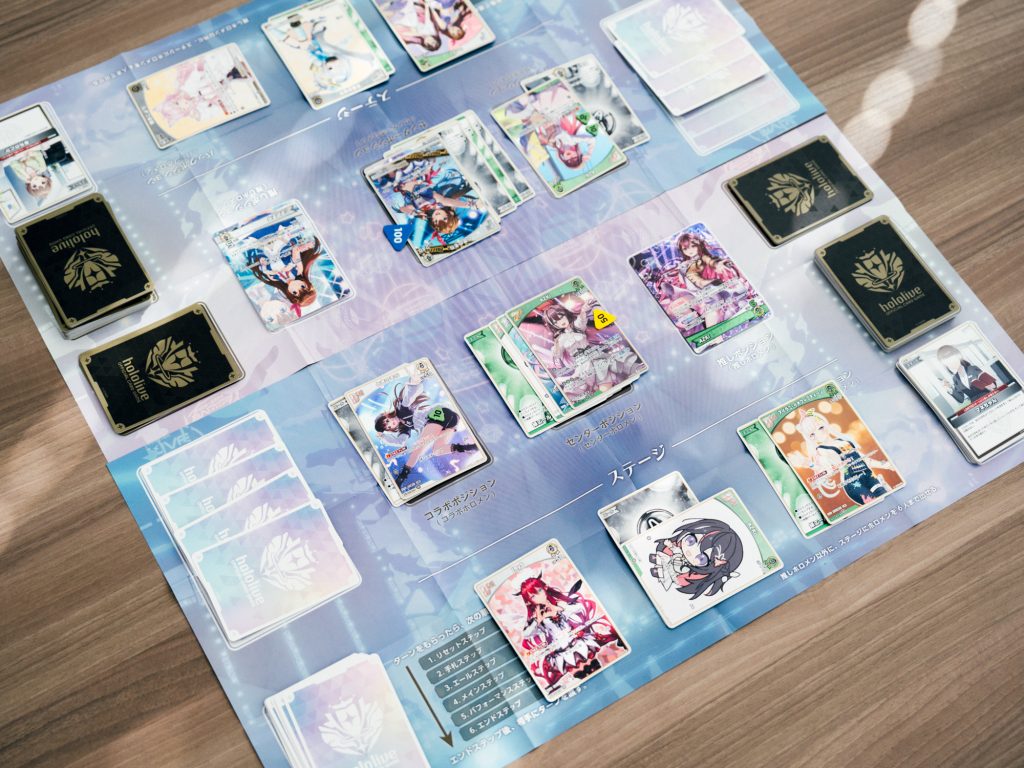
In hOCG, the entire game is framed as a “live concert stage.” VTuber cards appear on the “stage,” with the spotlight positioned at the front and center called the “center position,” with an area behind referred to as the “back position.” These terms were chosen to reflect a setting where every performer has a chance to shine. The name of the zone that corresponds to the traditional “graveyard” of the game is one of the points we were really particular about!
In many card games, the place where used cards and cards that are discarded as a result of what happens in game is called the “graveyard.” Although terms like “graveyard” or “leaving play” are commonly used to describe cards leaving play, we felt they didn’t suit the tone or lore behind hololive, so we opted for something more fitting: the “Archive.” This name was inspired by the idea of archived streams that remain available even after a livestream ends and is also a reflection of the unique world of hololive and a nod to its fan culture. When the idea came to me, I felt that we’d struck gold!
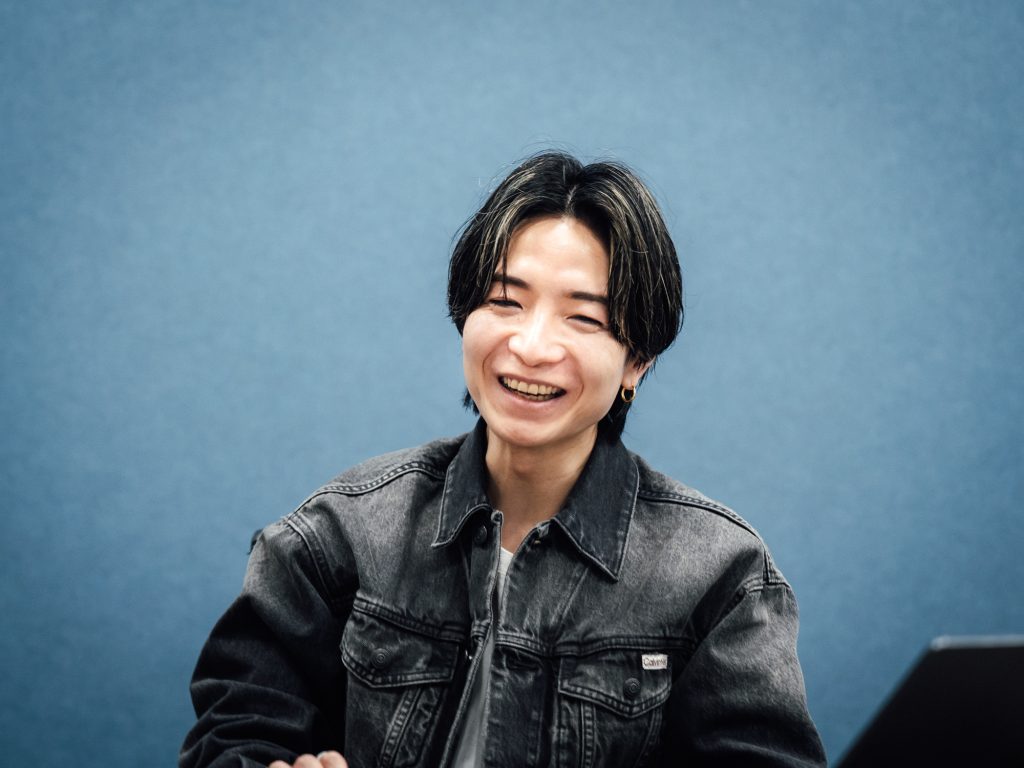
ーKawatsu, as someone with experience working on titles besides hOCG, what were your initial impressions of the hOCG concept at the time?
I honestly thought, “Wow! This is something new.” The card games I have been involved with so far are based on worlds where characters battle each other, so in that sense, hOCG’s concept of “co-creation and competition” was refreshing.
With hOCG, there is a large emphasis on allowing fans to assemble powerful decks based on their oshi, but this has made balancing the game rather difficult…! In conventional card games, each pack contains 100 to 200 different cards, and for those that are centered around competition, strong decks generally converge into a few select patterns. At hOCG, we aimed to create an environment where fans could feel that their oshis were performing well with the cards they have while maintaining a balanced card game, and it has been a very difficult yet rewarding challenge to figure out how to make sure that fans can express their feelings for their oshis while playing the game.

ーPlease tell us about the cards themselves and any elements that are unique to hololive.
The “totsumachi” card, inspired by Kawatsu, is very impressive! In VTuber streaming culture, there’s a type of stream called “totsumachi” where a streamer goes live and is on standby, saying “anyone’s welcome to drop in,” and guests spontaneously join the stream. To incorporate this culture into the world of hOCG, we drew inspiration from the fact that the talents themselves regularly create thumbnails for their YouTube streams, and we were able to have the talents design these cards themselves.

Talents teamed up with fans on stream to come up with card designs and layouts, which were shown live, and had other participants joined in, which created a truly hololive-ness atmosphere. I believe that the process of creating cards together becomes entertaining in itself, and that experience of “witnessing the moment” a card is created really enhances its value for fans.
I think being able to see card designs being created in real time on stream and turned into actual works of art is an experience that is hardly found in other card games and is uniquely appealing to hOCG. I think it’s fantastic that the progression of a talent’s career can be preserved in the form of such cards.
hOCG’s card text actively incorporates words used in actual streams and words that embody the personalities of the talents. We’ve subtly sprinkled in references that fans will recognize, not just in the names of skills and abilities, but also in the “arts” names and card effect descriptions.
For example, “Tsunomaki Janken” (Rock-Paper-Scissors) on Tsunomaki Watame’s card is a reference to a signature bit that originated in one of her streams. There may be people familiar with card games wondering, “Why is she playing rock-paper-scissors?” and search for and find “Tsunomaki Janken” on YouTube, leading them to Watame’s streams and character. I believe that design elements, such as text like this, that really incorporate the essence of hololive and allow users to discover the personalities and streams of the VTubers through the cards is one of hOCG’s greatest attractions.
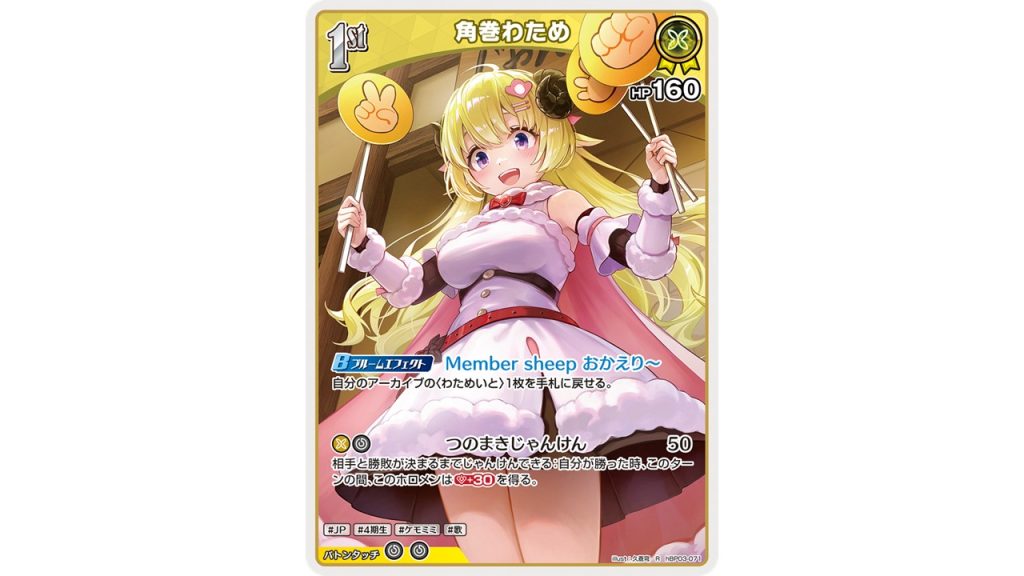
With a variety of content being streamed daily, there are many moments when I think, “I definitely want to make a card out of this new idea or famous scene!” That said, there are production and fine-tuning processes involved before cards are actually finished, so there will inevitably be a lead time of several months. There’s a certain frustration in not being able to instantly convey the energy of particular moments, but even so, there’s still a genuine joy in being able to encapsulate that passion in a single card. We will be releasing a new series of cards next month that will bring some fresh elements into the game, with each talent’s personality on display more than ever.
That’d be “Curious Universe.” We are thinking long and hard up until the very last stages of development about how to make the cards more interesting and fun, so look out for them!
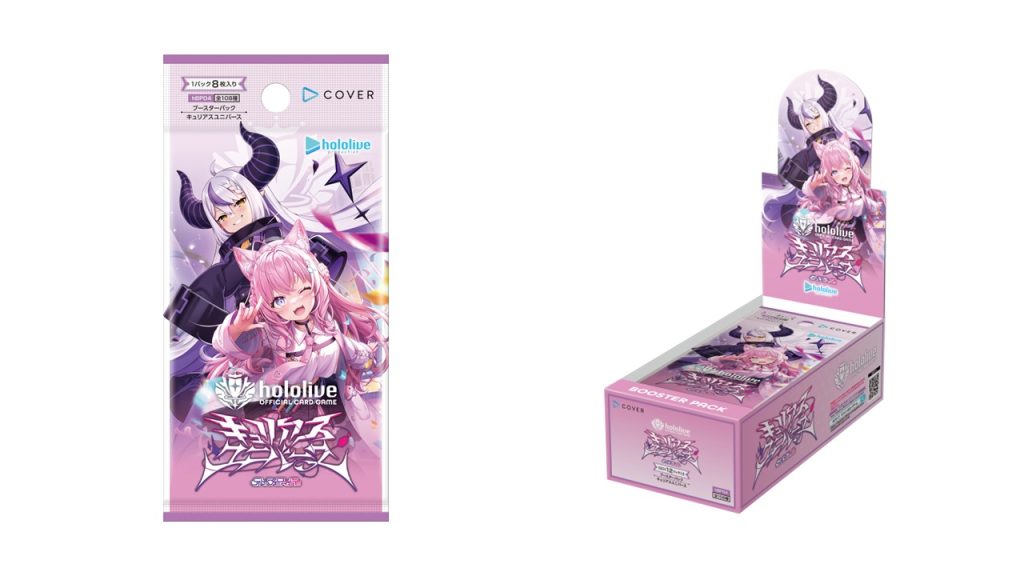
An entertainment experience that passionate fans around the world can share
ーPlease tell us about the decision to release an English version by the end of the year.
Since the release of hOCG, we have received a tremendous outpouring of requests for an English version and to be honest, I really wanted to release it sooner than we are currently able.
When I spoke, at a tournament, with fans from overseas who are living in Japan, I learned that volunteers in overseas Discord communities are translating card text while playing the game. I was deeply appreciative and it made me truly happy, but part of me also felt a little guilty because while hololive livestreams are available worldwide via YouTube, the card game can only be played in Japanese. This isn’t the way it should be. Therefore, this has motivated us to release an English version so that fans around the world can enjoy the game in its official form, which is a very meaningful first step toward creating an entertainment experience that can be shared by hololive fans across the globe.
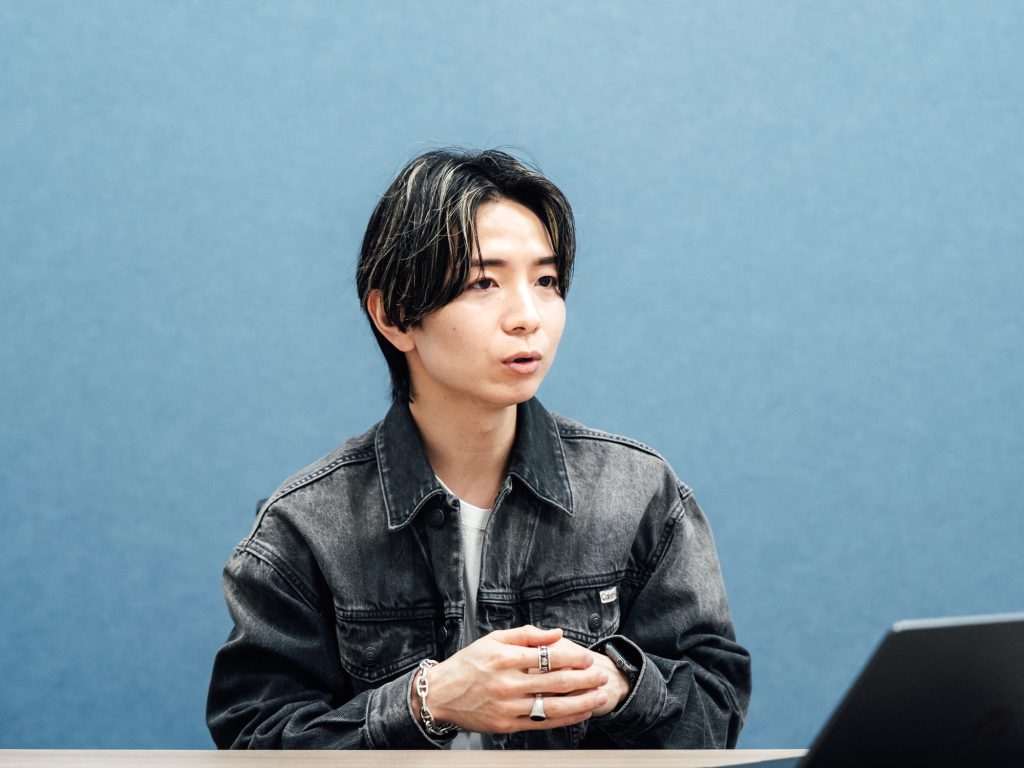
TCGs are currently generating a buzz around the world and attracting global attention. There are Japanese TCGs available in multiple languages for overseas markets, but the English version of hOCG will be particularly targeted at the North American market. The distribution structure in both Japan and North America is basically the same, with distributors supplying shops, but North American distributors tend to plan events on their own initiative. Therefore, I plan to visit many shops in preparation for the release of the English version to understand what is required for different regions.
I also visited card shops during a previous business trip to North America, and I felt that these vendors play a pivotal role in TCG culture. For example, there is a culture where winners of TCG tournaments display their trophies at the card shops themselves rather than at home. It is a way for players to express their gratitude to the shop for contributing to them winning a championship and their pride in achieving such results there. In Japan, there are many chain stores, but in North America, there are a lot of independently-owned shops, and the characteristics of each shop vary greatly depending on the owner’s tastes and sensibilities. Therefore, I think that making friends and forming communities will be particularly vital for the English version.
One of the challenges, particularly overseas, is that new card games often receive a lot of fanfare when they are first released, but the key is maintaining lasting appeal. This is also true in Japan, where offline activities are essential in the TCG business, and diligent door-to-door sales are the most effective. Even in Japan, we visited shops to hold classes on how to play the game before its release, so I think it will be similarly important to visit shops in-person overseas, hold offline events, and listen directly to user feedback.

Offline interactions and growing communities driving the evolution of games
ーBased on our conversation so far, I understand that knowing what is happening on the frontlines is critical to the success of hOCG.
The TCG genre is one that is built on sustained communication with users, and not just by delivering new products. This is something I myself have become keenly aware of for the first time through the production of hOCG and is common across the entire TCG industry, setting it apart from other forms of entertainment. TCGs are built on the premise of growing and evolving together with its users, so from the management side, we still have a long way to go in terms of policies and platforms, but are committed to continually learning so that fans don’t lose interest.
I personally try to attend as many events as I can, and I have gotten to know many players through repeated encounters. I’m confident that keeping up such efforts will lead to building trust with our fans and the formation of a long-lasting community.
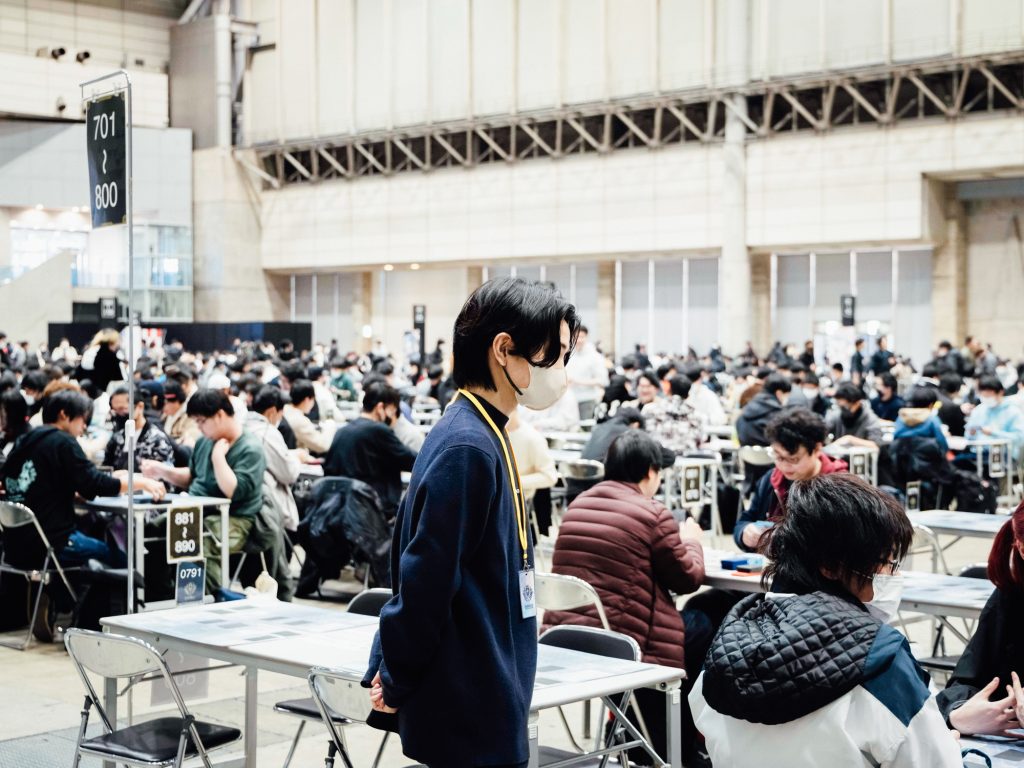
Currently, there is a myriad of types of people who enjoy hOCG, including those who like it as a TCG, those who like it because of hololive, and those who collect the cards as merchandise even if they don’t play. We plan to further segment our current events and initiatives to offer services that meet specific needs.
For example, we want to create a space where people can enjoy a variety of activities, such as offering ways to play other than at competitive events and providing content that is not directly related to the cards. I want to create positive environments not only among players but also with shop staff and the operations team: places where people naturally say, “Let’s meet again at a hOCG event!” or “Next time, let’s go to a hololive event!” In addition, many card shop staff members are also fans of hololive and I am discussing with Horie the possibility of organizing events exclusively for shop staff as well as competitions between companies.

In addition to official initiatives, I would like to further develop frameworks to support events and interactions that fans plan and hold on their own. Ideally, I’d love to see locations popping up all over the place where fans can feel at home knowing that if they go to a particular shop, they’ll always find fellow hololive fans there. I consider these initiatives to be crucial not only in Japan but also overseas.
Toward a culture that fosters connections: The future of hOCG
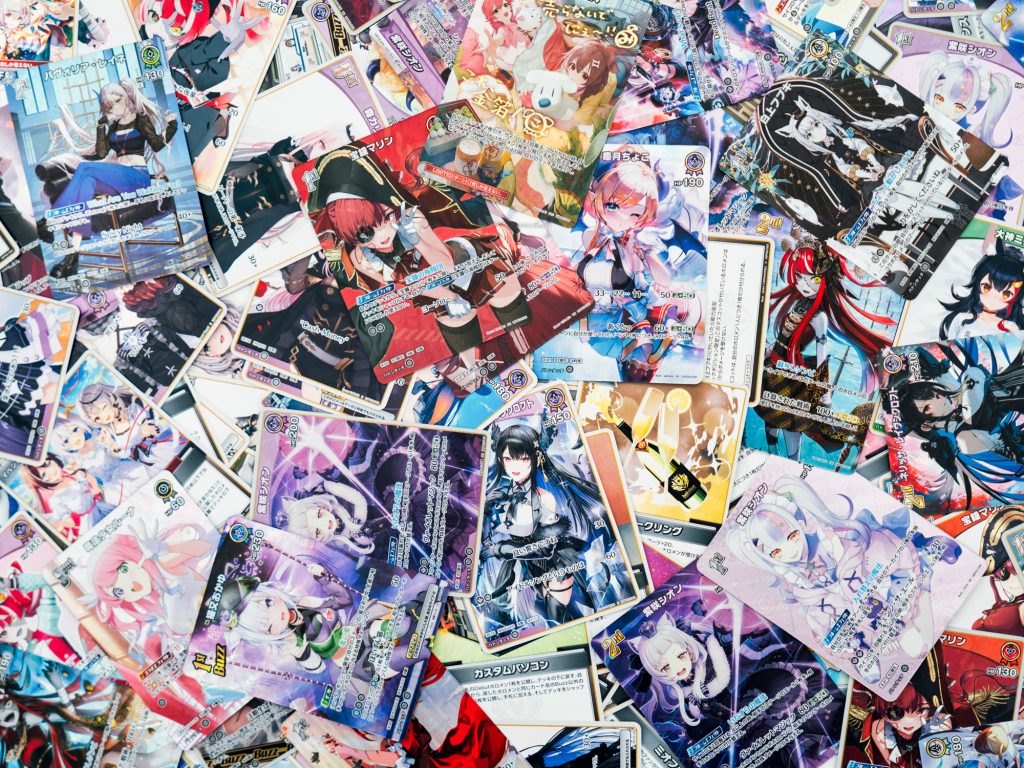
ーWhat is your vision for the medium- to long-term development of hOCG? Are there any areas or projects you would like to focus on in particular?
After the English version is released, I would like to hold an event where hololive fans worldwide can play under the same rules. While live events are held several times a year, users can gather regularly to play card games with a strength of hOCG being that it can be played under the same rules regardless of language.
I believe there’s a lot of potential in creating a TCG that’s uniquely suited to VTubers. While COVER will follow industry conventions where appropriate, I also want to take on new challenges in certain areas and build a culture that’s unique to hOCG.
At Bushiroad, we also aim to give back to other IP we are involved with. Through hOCG, I want to provide value that will delight hololive fans.
In addition, with the recent expansion of the user base, the image of TCG as something played just by kids has completely faded. Nowadays, elementary school students and adults alike enjoy the game equally under the same rules regardless of age. I feel that TCG is becoming a common language that connects people across generations and backgrounds. I hope to continue connecting fans through events and other initiatives to expand the hOCG community.
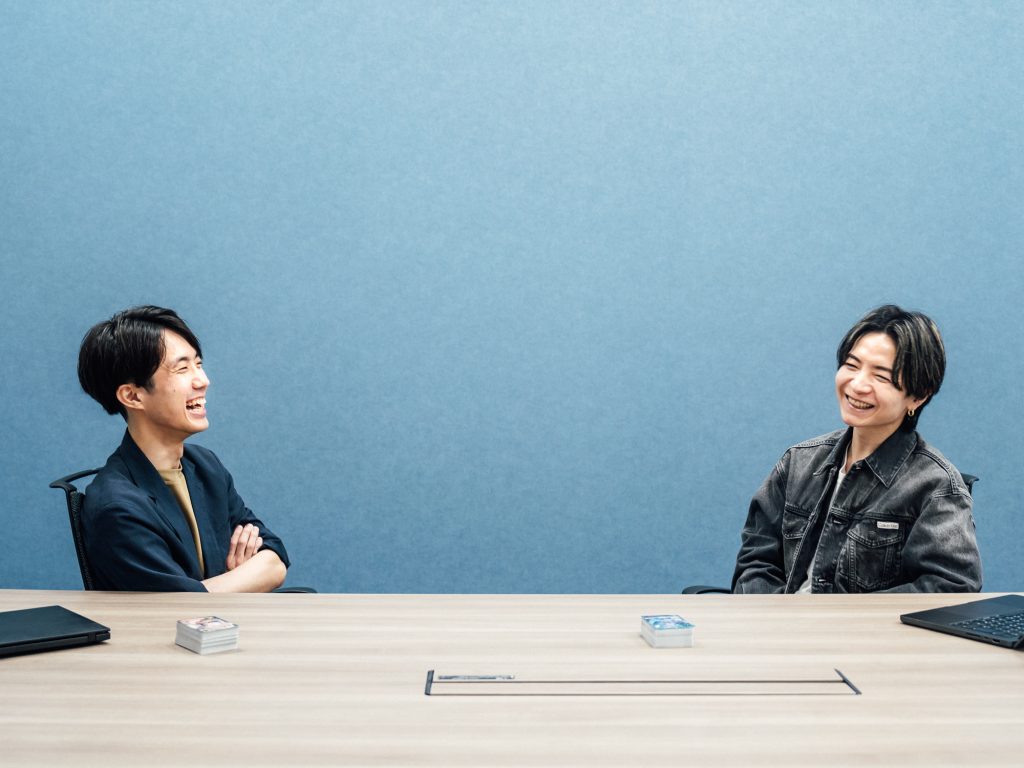
ーLastly, if you had to describe hOCG in one phrase, how would you define it?
I would describe it with the phrase, “Everyone connected by hOCG is there.” By “everyone” I am referring to a truly diverse group of people, including hololive VTubers, users who play the game, shops that sell the cards, creators who draw the card illustrations, and overseas fans who participate from far away.
I see hOCG as a space where people can connect through a common language—something truly valuable that must never be taken away. I hope that it will become the core of a culture that goes beyond a simple card game to include meaningful encounters, interactions, and the sharing of emotions through oshi.
In a phrase, I think hOCG is the “center of fun and enjoyment.” hOCG is a collaborative effort involving not only COVER and Bushiroad, but also many other companies and individuals, with a shared spirit of building something meaningful together. Everyone seems to be enjoying themselves very much during our meetings, which really impresses me. At the heart of any creative endeavor, what matters most is whether people truly believe it’s fun and engaging. If that starts to fade, fans will also lose that sense of enjoyment. hOCG is a game that I myself enjoy playing wholeheartedly, and I feel that users can genuinely feel my passion for it.
*1: The Media Create TCG Award was established to celebrate the development of trading card games, and hOCG was awarded for being a new trading card game series with the highest sales in FY 2024.
*2: Pokémon and Pocket Monsters are registered trademarks of Nintendo, Creatures, and GAME FREAK.
A report on the hOCG World Grand Prix 2025 held in January has also been posted on COVERedge. Please make sure to check out this article as well.

